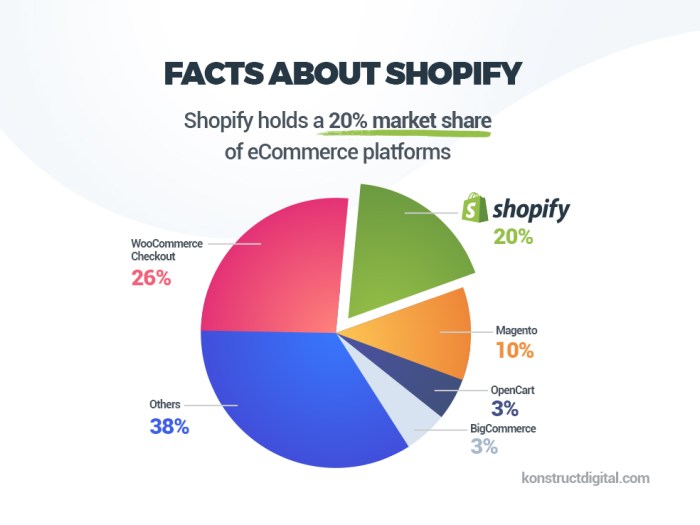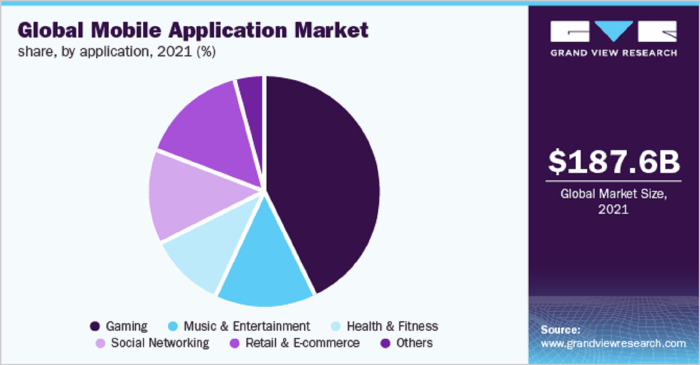Exploring Shopify Market Share: A Comprehensive Analysis
Delving into the realm of Shopify market share, this article aims to shed light on the significance of understanding this metric for businesses. From its humble beginnings to its current position in the e-commerce industry, Shopify's journey is nothing short of remarkable.
Let's dive in to uncover the secrets behind its market share dominance.
Overview of Shopify Market Share

Shopify, founded in 2006, has grown to become one of the leading e-commerce platforms globally. Initially starting as an online snowboard store, Shopify now powers over 1.7 million businesses in more than 175 countries.Understanding Shopify's market share is crucial for businesses looking to establish an online presence.
With a significant portion of the e-commerce market, knowing Shopify's reach can help businesses make informed decisions on platform selection, marketing strategies, and overall competitive positioning.
Shopify’s Market Share Comparison
- As of 2021, Shopify holds a market share of approximately 11% in the e-commerce platform industry, placing it behind market giants like WooCommerce and Magento.
- Despite not having the largest share, Shopify's user-friendly interface, robust features, and extensive app marketplace have contributed to its rapid growth and popularity among entrepreneurs and small to medium-sized businesses.
- Shopify's focus on mobile responsiveness, optimization, and integrations with social media platforms have also played a significant role in expanding its market share and attracting a diverse range of merchants.
Factors Influencing Shopify’s Market Share
Shopify's market share growth is influenced by several key factors that have contributed to its success in the e-commerce industry. These factors include its features, pricing strategy, and marketing efforts.
Impact of Shopify’s Features
One of the main factors driving Shopify's market share growth is its user-friendly interface and robust features that cater to the needs of both small businesses and large enterprises. Features such as customizable templates, secure payment gateways, and easy integration with third-party apps have made it a popular choice among online retailers.
Impact of Shopify’s Pricing Strategy
Shopify's pricing strategy plays a significant role in attracting businesses of all sizes. With multiple pricing plans available, including a free trial option, Shopify offers flexibility and scalability to its users. This competitive pricing model has helped Shopify capture a wide range of customers and expand its market share.
Impact of Shopify’s Marketing Strategies
Shopify's marketing strategies, including targeted advertising, partnerships with influencers, and social media campaigns, have been instrumental in increasing brand awareness and driving customer acquisition. By leveraging various marketing channels effectively, Shopify has been able to reach a broader audience and solidify its position in the market.
Regional Market Share Analysis
In order to understand Shopify's global presence, it is crucial to analyze its market share in different regions. By comparing Shopify's performance in North America, Europe, Asia, and other key markets, we can gain insights into how the company tailors its strategies to suit varying regional dynamics.
North America
North America serves as one of the strongest markets for Shopify, with a significant portion of its market share concentrated in the United States and Canada. The company has established a solid presence in the e-commerce landscape of this region, catering to a diverse range of businesses from small startups to large enterprises.
Europe
In Europe, Shopify has been steadily expanding its market share, particularly in countries like the United Kingdom, Germany, and France. The company's focus on localization and support for multiple languages and currencies has contributed to its success in this region, where e-commerce regulations and consumer preferences can vary significantly.
Asia
Asia presents a unique set of opportunities and challenges for Shopify, given the diverse markets and rapidly growing e-commerce industry. While Shopify faces competition from local players in countries like China and India, it has made strategic partnerships and investments to strengthen its position in the region.
The company's flexible platform and integration with popular payment gateways have helped it appeal to a wide range of businesses in Asia.
Other Key Markets
Apart from the major regions mentioned above, Shopify also focuses on expanding its market share in emerging markets and niche segments globally. By identifying specific needs and preferences of different markets, the company continuously adapts its strategies to drive growth and increase its market share worldwide.
Market Share Trends and Predictions
As we delve into the market share trends and predictions for Shopify, it's essential to analyze the trajectory of the company's performance over the past few years and forecast its future growth based on current trends. However, we must also consider potential challenges that could impact Shopify's market share in the future.
Market Share Trends Analysis
Looking back over the past few years, Shopify has exhibited a steady and impressive increase in market share within the e-commerce industry. With its user-friendly platform, extensive range of features, and strong customer support, Shopify has successfully attracted a growing number of online retailers and entrepreneurs to its platform.
This has resulted in a significant uptick in its market share, cementing its position as a leading e-commerce solution provider.
Future Market Share Predictions
Based on the current trends observed in Shopify's market share growth, it is reasonable to predict that the company will continue to expand its market presence in the coming years. As more businesses transition to online selling and seek reliable e-commerce solutions, Shopify is well-positioned to capitalize on this demand and further increase its market share.
Additionally, with ongoing innovations and enhancements to its platform, Shopify is likely to attract even more users and solidify its market dominance.
Potential Challenges Impacting Market Share
Despite its strong growth trajectory, Shopify may face certain challenges that could impact its market share in the future. Competition from other e-commerce platforms, changes in consumer behavior, and shifts in the regulatory environment are some factors that could pose challenges to Shopify's continued market share expansion.
Additionally, evolving technology trends and unforeseen market disruptions may also influence Shopify's market position, requiring the company to adapt and innovate to maintain its competitive edge.
End of Discussion
In conclusion, Shopify's market share stands as a testament to its prowess in the e-commerce landscape. As we reflect on the trends, predictions, and regional analysis discussed, one thing is clear - Shopify continues to be a force to be reckoned with in the market.
Stay tuned for more insights on this dynamic topic.
Answers to Common Questions
What factors have contributed to Shopify's market share growth?
Factors such as user-friendly features, competitive pricing, and effective marketing strategies have played a significant role in driving Shopify's market share growth.
How does Shopify adapt its strategies based on regional market share data?
Shopify analyzes regional market share data to tailor its marketing initiatives, product offerings, and pricing strategies to cater to the specific needs and preferences of each market.
What challenges could potentially impact Shopify's market share in the future?
Potential challenges such as increased competition, shifts in consumer behavior, and technological advancements could influence Shopify's market share in the future.




